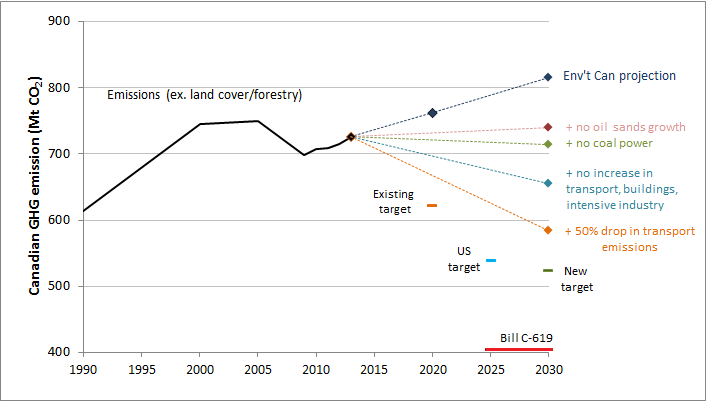The Trudeau government comes into power after years of, in the assessment of climate policy expert Marc Jaccard, the federal government doing “virtually nothing” to meet its greenhouse gas targets.
With a little over a month before the UN Climate Summit in Paris, the government must act fast to demonstrate to the world that Canada will be an active part of the global effort to address climate change. It also needs to show Canadians what the experts all know – that addressing climate change is not a choice between the environment and the economy, it is a choice between the future and the past.
Here are four steps the government could take in advance of Paris to win back trust on climate change in Canada and abroad.
First, the new government must be honest with the public about what is possible. As much as it pains me to write this, that means holding firm against calls for more aggressive emissions targets.
Environmental activists are upset that the target set by the former conservative government – a 30% reduction below 2005 levels by 2030 – is not in line with the global goal of minimizing global warming to less than 2°C. They are correct.
However, the fact is we are far off the pace to meet even this “weak” target. Experts on the emissions will roll their eyes if Canada promises a more ambitious target. After years and years of empty promises, it is better to strive to meet an underwhelming goal then yet again fail completely to meet an overwhelming goal.
Second, announce an action plan for holding provincial meetings to negotiate carbon pricing either in advance of, or ideally at, the Paris climate summit.
During the campaign, the Liberals smartly recognized that, like it or not, the federal government cannot shove a carbon price down the province’s throats. The ideal compromise is an opt-in plan, whereby each province agrees to either use a federal carbon price, established via a British Columbia-style tax or a cap-and-trade system, or employ its own system with at least an equivalent price.
Third, signal intent to reinvigorate an environmental assessment process compromised by the Harper government. That includes eliminating changes that were made to environmental legislation like the Navigable Waters Act, and also requiring that greenhouse gas emissions must be considered in all National Energy Board decisions.
The combination of carbon pricing and a return to Canada’s once- rigorous environmental assessment will take the decisions about carbon-intensive infrastructure out of the hands of lobbyists. Rather than the Prime Minister promising a yes or a no to individual pipelines, the Prime Minister should make sure Canada has an assessment system equipped to make the right decision for the climate, the environment and the economy.
Finally, bring Canada’s federal scientists back out of the dark. The world has watched as the Harper government undermined Canada’s long-standing reputation as a scientific leader. Labs were closed, libraries were destroyed, funding for pure research was cut, and government scientists were blocked from speaking to the media. While the damage to Canada’s research capacity and environmental monitoring cannot be undone in the few days before our federal delegation embarks for Paris, a symbolic step can be taken right away.
What better way to show Canadians that the government trusts data and is serious about addressing climate change than to include one or some federal government climate scientists as official parts of the government delegation to Paris.
These are only the first of many important steps for Canada. There’s much to be done on research and innovation, green infrastructure, and climate aid to the developing world, which one could argue belong here as well.
The good news, as this election has demonstrated, is that a change in direction is possible.


